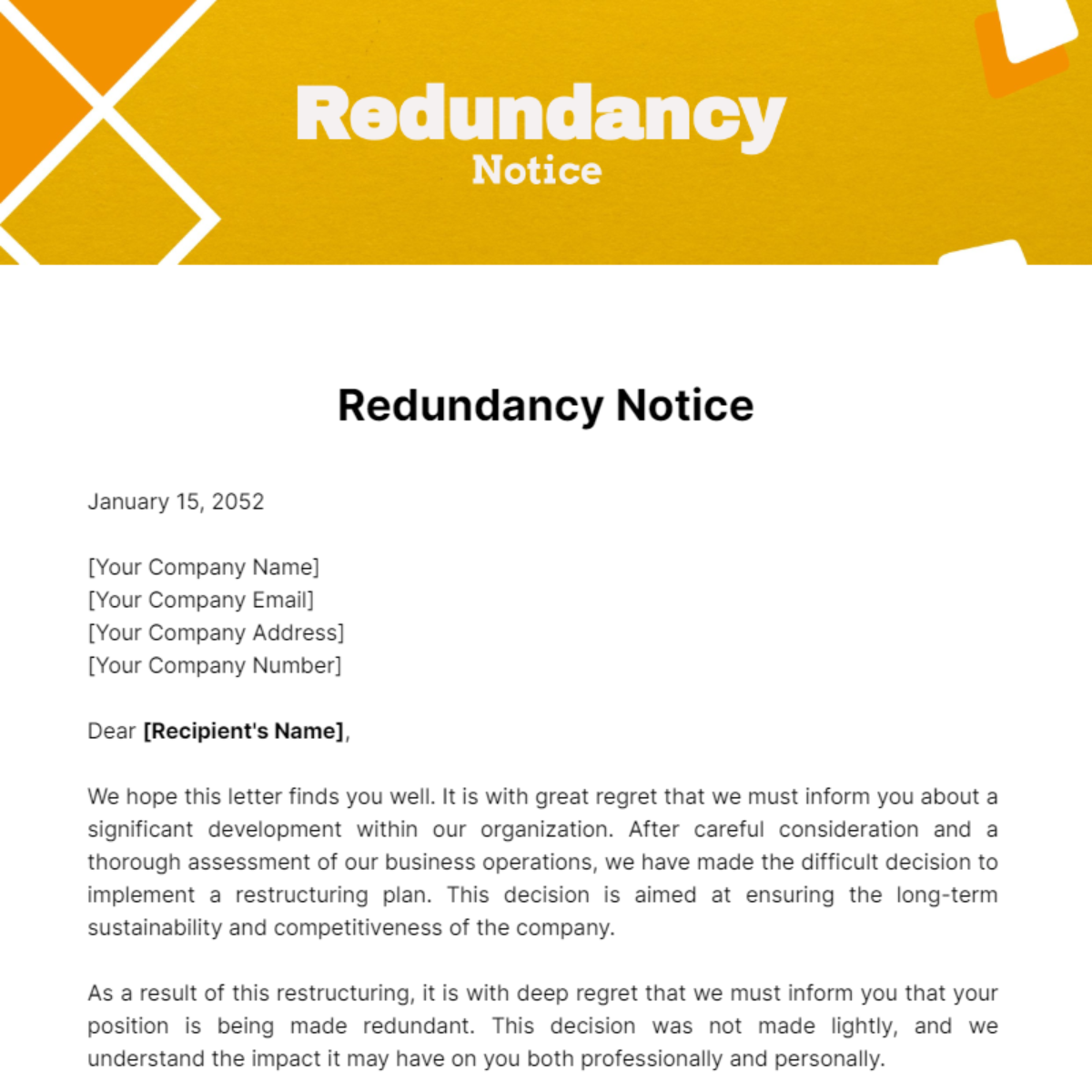Small Business Closing Employee Rights UK: What You Need to Know About Redundancy
Small Business Closing Employee Rights UK: What You Need to Know About Redundancy
Blog Article
Examining the Interplay In Between Firm Redundancy and Business Flexibility for Future Growth
In the vibrant landscape of today's company world, the complex connection between company redundancy and business versatility emerges as an essential aspect for continual growth and success. Firms frequently encounter the obstacle of striking a delicate balance in between preserving a level of redundancy to reduce dangers and cultivating adaptability to react quickly to the ever-evolving market demands.
Relevance of Company Redundancy
Company redundancy is an essential component that improves business durability and mitigates operational risks. By including redundancy actions within the organizational structure, companies can better withstand unexpected disturbances and fluctuations in the company setting. Redundancy acts as a critical barrier, permitting firms to adjust and react properly to unanticipated challenges without endangering crucial procedures.
One secret facet of the importance of business redundancy is its duty in guaranteeing connection during times of dilemma. When confronted with unexpected modifications or emergency situations, repetitive systems, sources, or workers can action in to keep crucial features and prevent prevalent disturbances. This connection not just safeguards the company's reputation and customer trust fund however likewise reduces economic losses and operational downtime.

Strategies for Organizational Flexibility

Developing versatile organizational structures that enable for fast changes to market characteristics and client demands is vital for staying competitive in a swiftly developing atmosphere. By proactively recognizing possible disturbances and possibilities, companies can proactively grow and adapt in an ever-changing service landscape.
Balancing Redundancy and Versatility
Attaining an unified stability between functional redundancy redundancy if company goes bust and business adaptability is extremely important in navigating the complexities of a dynamic organization environment. Striking the best balance between redundancy and versatility is a delicate procedure that needs a deep understanding of the company's objectives, industry dynamics, and risk tolerance.
To achieve this equilibrium, firms require to carry out routine evaluations of their procedures to recognize areas where redundancy is needed for threat reduction and where adaptability can drive development and growth. Carrying out versatile frameworks, fostering a society of continual understanding and enhancement, and motivating open interaction throughout all degrees of the company are crucial approaches to harmonize redundancy and flexibility effectively. By aligning these two essential aspects, companies can position themselves for sustainable development and success in an ever-changing service landscape.
Study on Adjustment Success
In checking out circumstances of successful business adjustment, it comes to be apparent that the interplay between functional redundancy and adaptability is a defining element in shaping resistant businesses. A DVD rental service, Netflix demonstrated impressive adaptability by transitioning right into a streaming system when digitalization interfered with the sector. These instance research studies highlight the relevance of operational redundancy combined with business adaptability in fostering long-term growth and competition.
Structure Durability for Future Growth
Structure resilience for future growth calls for a strategic positioning of functional processes with market characteristics and emerging patterns. Companies need to adapt to altering environments by fostering a culture of flexibility, technology, and constant improvement.
Furthermore, cultivating strong relationships with stakeholders, such as customers, workers, suppliers, and the community, is vital for weathering unpredictabilities and preserving count on and support throughout stormy times. Effective communication and openness play a crucial role in structure durability, as they aid straighten assumptions and help with partnership in navigating unpredictabilities.
Additionally, companies require to prioritize understanding and development campaigns to upskill workers and furnish them with the required tools to adjust to altering situations. By investing in their labor force, companies can improve their versatility and agility, inevitably strengthening their look at this website durability for lasting future development.
Conclusion

In the vibrant landscape of today's organization world, the complex partnership in between business redundancy and organizational flexibility arises as an essential factor for sustained growth and success. Companies usually encounter the obstacle of striking a fragile equilibrium between keeping a level of redundancy to mitigate dangers and cultivating versatility to react promptly to the ever-evolving market needs.To achieve this balance, business need to perform routine evaluations of their operations to recognize locations where redundancy is needed for danger mitigation and where adaptability can drive advancement and growth.In verdict, the interplay in between business redundancy and business flexibility is crucial for future growth. Building durability via a combination More Info of redundancy and versatility will certainly guarantee that companies are prepared for the challenges of the future.
Report this page